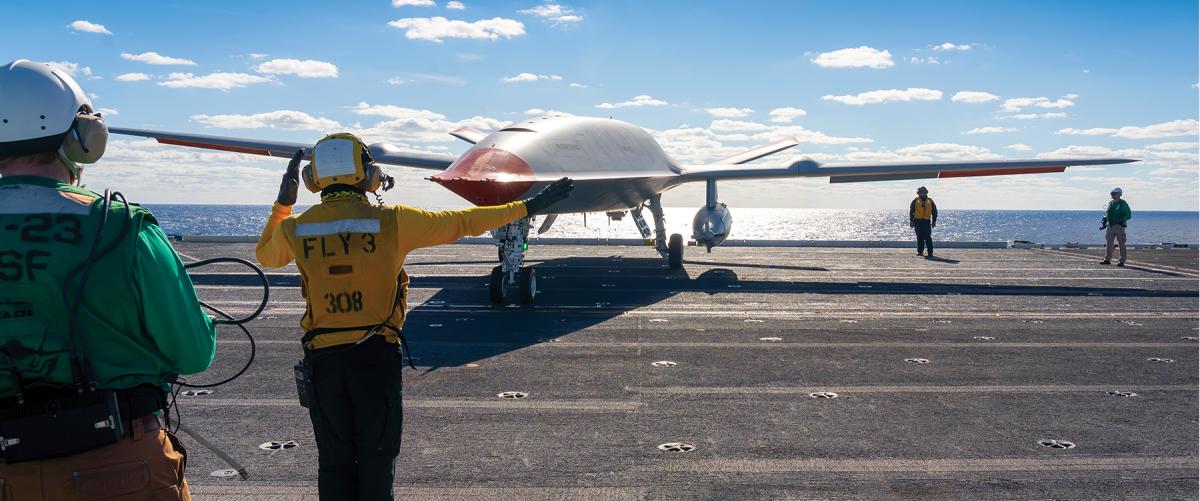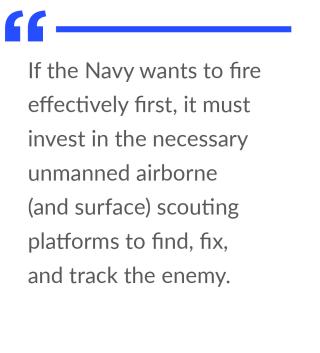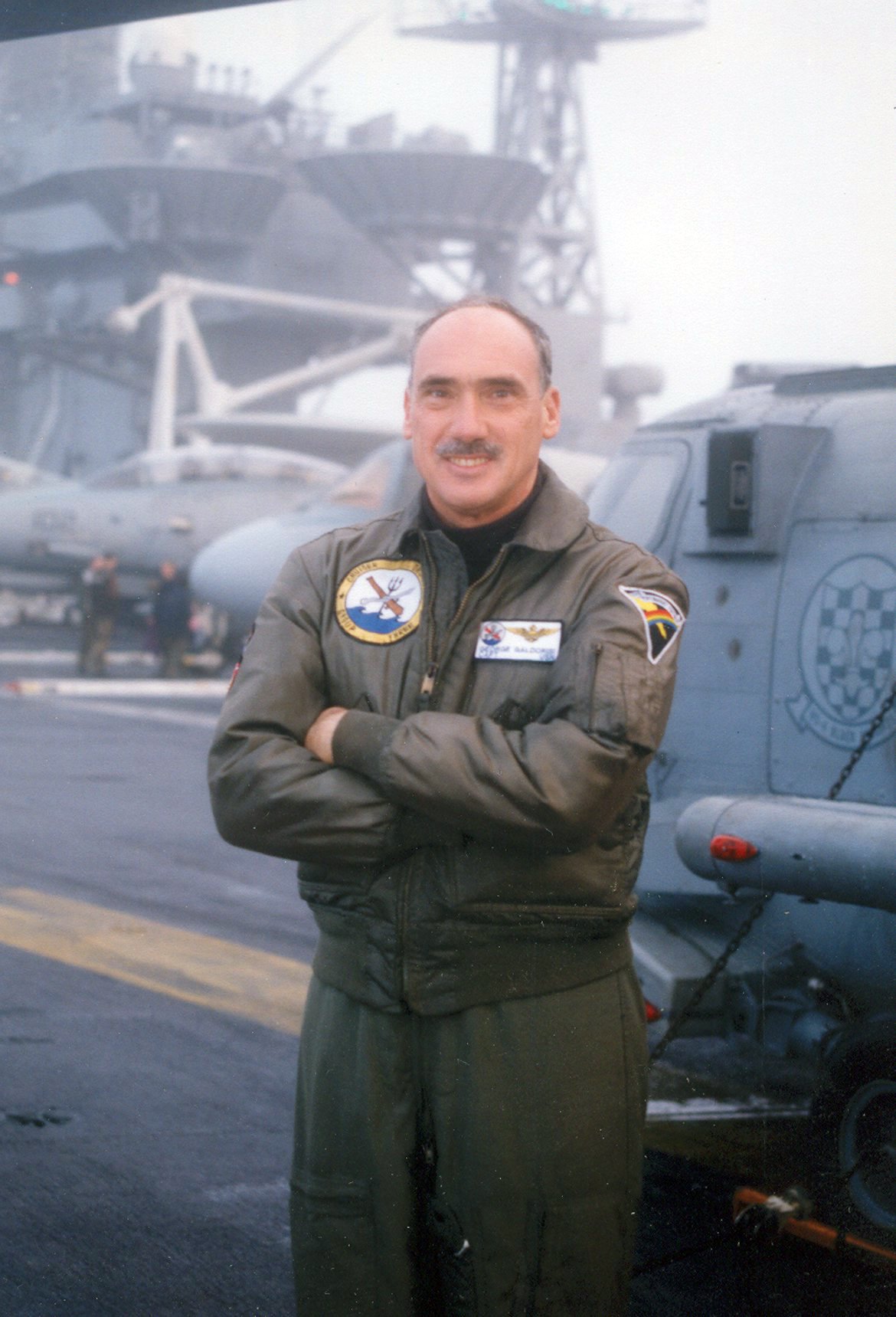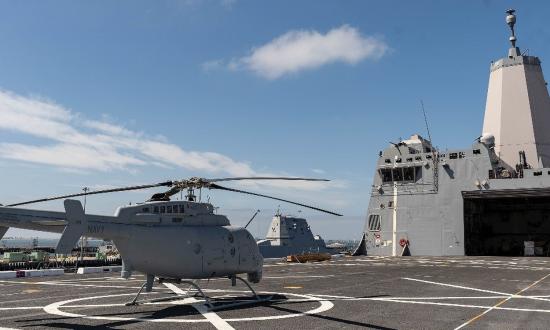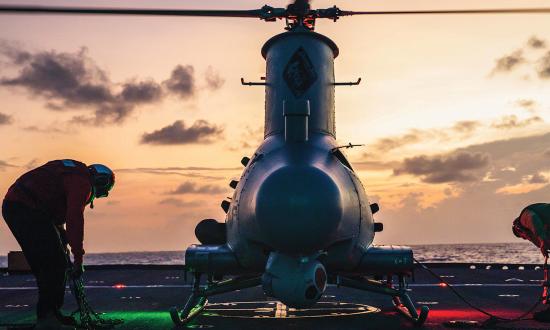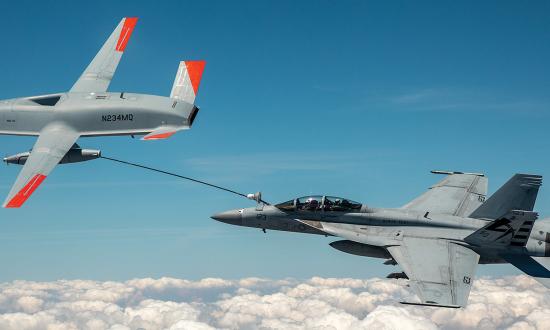Since the dawn of organized warfare, commanders have sought to gather intelligence on adversary position, strength, and intentions. Often, they have struggled to collect enough information to give them the edge in combat. As the Duke of Wellington famously said: “All the business of war is to endeavour to find out what you don’t know by what you do; that’s what I call guessing what’s on the other side of the hill.”1
One well-known case of intelligence being decisive in warfare occurred at the Battle of Midway in 1942. At the root of the U.S. victory was Navy intelligence professionals’ success at breaking Japanese codes and discovering the Japanese Navy’s plans to attack Midway Atoll.2 However, there is more to this story, and it is the importance of scouting.3
The Battle of Midway turned on one commander having more of the right information, at the right time, than the other. U.S. Navy PBY scout planes located the Japanese carriers first, while the Imperial Japanese Navy found the U.S. carriers too late to launch an effective attack. Had Admiral Isoroku Yamamoto learned the location of his adversary’s carriers a bit sooner, he might well have been victorious.4
Given the capabilities of today’s peer competitors, Navy commanders depend more than ever on receiving actionable intelligence—in real time—to create decision advantage and win wars. To that end, the Navy has harnessed emerging technologies to help process data as it is collected, but acquiring the data to feed those processes is its Achilles’ heel. Properly equipped unmanned aerial vehicles (UAVs) are the most affordable and effective solution.
Fighting Blind?
During the Battle of Midway, Admirals Frank Jack Fletcher and Raymond Spruance had a well-thought-out plan to use Navy PBYs to scout for the enemy fleet. Today, “scouting” is a lost art. Force Design 2045 calls for 373 manned ships and 150 large unmanned surface and subsurface platforms, but it does not address, even in a cursory way, naval aviation assets that might be used for scouting.5 Nor does the Chief of Naval Operations’ Navigation Plan 2022, referring only to future unmanned surface and subsurface platforms that will “expand our intelligence, surveillance, and reconnaissance advantage.”6 Even naval aviation’s forward-looking document, Navy Aviation Vision 2030–2035, does not address scouting aircraft except in the most futuristic terms.7
This lack of attention to scouting is somewhat understandable, as Force Design 2045 calls for a naval aviation force of some 3,000 aircraft.8 The idea appears to be that filling the sky with aircraft will deliver more than sufficient scouting capability and thus provide analysts the data they need to mine to provide curated, actionable intelligence to commanders to enable them to make informed decisions in the stress of combat.
Manned aircraft can discover a great deal of information. However, using an F/A-18E/F Super Hornet, MH-60R/S Seahawk/Knighthawk, or P-8A Poseidon (with a crew of nine) for a scouting mission is not only an expensive way to scout, but also takes these aircraft from other missions.
There is an option if the Navy wants to evolve a robust scouting capability: unmanned aircraft. When asked during a military-industry conference what kept him up at night, the Commander, Naval Air Forces (the Navy’s Air Boss), said: “When the E-2C lands in the last recovery of the night, my palms get sweaty.” He went on to say that he could use an unmanned aerial vehicle (UAV) that had the persistence to stay airborne throughout the night so he could have some basic situational awareness of what threats might be approaching his force.9
Navy UAV Development
The Navy fields several unmanned aerial systems: the MQ-4C Triton, MQ-8C Fire Scout, and MQ-25 Stingray, along with several smaller UAVs. But what has been accomplished has obscured what might have been. For example, the Air Boss could have a carrier-based UAV delivering persistent surveillance today had the Unmanned Carrier-Launched Airborne Surveillance and Strike (UCLASS) program, conceived as a surveillance and strike aircraft, continued on its original design path, rather than being morphed into the MQ-25 Stingray refueling aircraft.
The Navy’s other unmanned aircraft, while potentially excellent scouting platforms, are being underused because of their extant concept of operations. The Department of Defense Third Offset Strategy touted manned-unmanned teaming as providing a key technological edge for U.S. warfighters. For the Navy, the key manned-unmanned teaming examples are the P-8A Poseidon with the MQ-4C Triton and the MH-60R/S Seahawk/Knighthawk with the MQ-8C Fire Scout.10
While these platforms have been in the Navy inventory for some time, they have had—to borrow a sports term—only “incidental contact,” and there has been no teaming beyond having the MH-60S and the MQ-8C embarked together on board the littoral combat ship (LCS). The result is that these two UAVs require more manpower to operate, driving up their total operational cost and potentially jeopardizing each program.
Providing Better Scouting Platforms
If the Navy wants to have the right information at the right time, and be able to deliver well-curated information to commanders to give them a decision advantage, it would be well-served to use UAVs to provide scouting to determine adversary location, numbers, and direction of movement.11 None of the following initiatives require new airborne platforms:
• Configure the MQ-25 Stingray with the sensor package envisioned at the outset of the UCLASS program. This would not detract from using the MQ-25 in its airborne refueling mission. With an endurance of 12 hours, the Stingray could provide comprehensive intelligence, surveillance, and reconnaissance (ISR) coverage throughout the night.
• Write the (simple) code that would enable the MQ-4C Triton to operate as the autonomous platform it was designed to be, rather than having several operators control it with joysticks for the 30 hours the platform can stay airborne. Once launched, the Triton could be vectored to the vicinity of the P-8A Poseidon, whose operators could control it through simple voice commands, much like individuals communicate with their smart phones.
• Perform a similar procedure with the MH-60S Knighthawk/MQ-8C Fire Scout team, enabling the latter’s operators to “launch it and forget it” and turn it over to the helicopter’s mission commander. In addition, the Fire Scout could be used as a nighttime surveillance platform, providing the LCS (or future ships that might carry the Fire Scout) with a capability similar to what the MQ-25 can provide to the aircraft carrier.
• With all unmanned aerial platforms, perform the processing on board the UAV and send only curated information down the link. This was the concept behind Project Maven, the U.S. Air Force program that used artificial intelligence to comb through hours of mostly uninteresting video to pinpoint contacts of interest.
• Provide basic ISR capability to all Navy surface ships in the form of a military-grade quadcopter and a small unmanned surface vehicle similar to the MANTAS T12, which, fitted with solar panels, has a 30-day endurance. These inexpensive unmanned systems can enable ships to see well beyond the horizon and provide persistent surveillance.
• For the Navy’s submarine force, build on the initial experimentation with the Blackwing UAV and equip the force (easily the most ISR-disadvantaged part of the Navy) with this asset.
‘Give Us the Tools’
If the Navy wants to fire effectively first, it must invest in the necessary unmanned airborne (and surface) scouting platforms to find, fix, and track the enemy. To borrow Winston Churchill’s plea to the Americans in February 1941: “Give us the tools, and we will finish the job.”
1. Duke of Wellington, cited in Louis Jennings, ed., The Correspondence and Diaries of the Late Right Honourable John Wilson Croker, Secretary to the Admiralty from 1809 to 1830 (Albemarle Street, London: John Murray, 1885).
2. Mark Munson, “Battle of Midway: The Complete Intelligence Story,” War on the Rocks, 3 June 2016.
3. The importance of scouting to the outcome of the Battle of Midway is the subject of a number of excellent articles: Wayne P. Hughes, “Naval Operations,” Naval War College Review 65, no. 3 (2012); Robert C. Rubel, “A Theory of Naval Airpower,” Naval War College Review 67, no. 3 (2014); Anthony Tully and Lu Yu, “A Question of Estimates: How Faulty Intelligence Drove Scouting at the Battle of Midway,” Naval War College Review 68, no. 2 (2015); and Battle of Midway Combat Narratives (Washington, DC: Naval History and Heritage Command, 2017).
4. Craig Symonds, The Battle of Midway (Oxford, UK: Oxford University Press, 2011).
5. Sam Lagrone, “Navy’s Force Design 2045 Plans for 373 Ship Fleet, 150 Unmanned Vessels,” USNI News, 26 July 2022.
6. Chief of Naval Operations’ NavPlan 2022 (Washington, DC: Department of the Navy, July 2022).
7. Navy Aviation Vision 2030–2035 (Washington, DC: Department of the Navy, 2021).
8. Lagrone, “Navy’s Force Design 2045.”
9. Remarks by Commander, Naval Air Forces, VADM Mike Shoemaker, UAS West conference, March 2015.
10. Deputy Secretary of Defense Work’s interview with David Ignatius at the “Securing Tomorrow” forum, Washington, DC, 30 March 2016.
11. David Kahn, “The Rise of Intelligence,” Foreign Affairs, September/October 2006.




